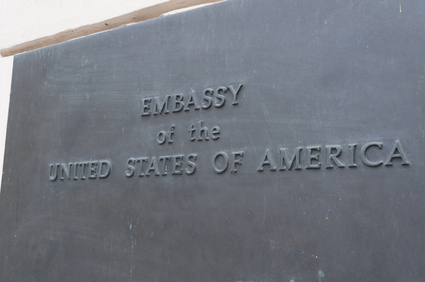A move to overturn a previous, normally non-appealable visa decision by the Obama Administration has created worries about “suspicious financial activity”. The Obama administration accelerated visa applications for about twenty-four foreign investors for a Las Vegas hotel after insistence from Senate Majority Leader Harry Reid and his staff, reports the Washington Times. The Times, said the Obama decision ultimately benefited several companies whose directors have been large Democratic contributors.
THE IMMIGRANT INVESTORS VISA
The United States Immigration Act of 1990 created a type of immigrant visa that would be available to those non-Americans who are able to invest $1 million in a business in the US provided that the business would employ at least 10 full time American workers, excluding the investor and his or her family members and others who may be in the US on non-immigrant visas such as an H-1B. Those who qualify for this type of immigrant visa, which is generally known as an EB-5 Visa, may live permanently in the US , also bringing their spouses and children who are under 21 years old at the time of initial application (collectively “the Investor’s Dependents”).
An Investor who can qualify for an EB-5 Visa initially files an application with the United States Citizenship and Immigration Services (“USCIS”) on a USCIS Form I-526. If USCIS approves the Form I-526, the Investor and the Investor’s Dependents are eligible to qualify for conditional permanent residence in the US, receiving a “green card” that is valid for two years. Within a 90 day period that ends at the second anniversary of the conditional permanent residence status, the Investor must submit evidence to USCIS with USCIS Form I-829 documenting that the full required investment has been made and that 10 jobs have been created or will be created within a reasonable time period. If USCIS approves the Form I-829, then the Investor and the Investor’s Dependents are eligible to have the conditions removed on their permanent residence, receiving a “green card” that can be renewed for life. After a further three years the Investor and the Investor’s Dependents will be eligible, if they wish, to apply to become United States citizens.
While successful EB-5 applications were limited during the period from 1990 to 2006, the economic challenges facing the US and in particular persistent unemployment in many areas have led to changes in both the structure of the program and the number of immigrant visas that have been issued.
One of those changes was to the amount required to be invested. While the basic amount required to invest remains $1 million, that amount may be reduced to $500,000 if the investment is made in a “Targeted Employment Area” (“TEA”), which is either a rural, sparsely inhabited area or one of relatively high unemployment. The determination of whether a location is within a TEA due to unemployment is in practice generally determined by the government of the local State; most applications are now made in a TEA.
A second change was to provide for “regional centers” as a vehicle for filing applications. 3,000 of the maximum 10,000 EB-5 Visas available each year were set aside in 2003 for those who use a Regional Center to qualify for EB-5 Visas. Those immigrants who qualify through a Regional Center are not required to show that their particular investment generated 10 jobs but are instead permitted to use an economist’s report that the effect of their investment, in combination with that of the other Regional Center applicants who invested in a particular project, generated 10 or more jobs per investor.
Another change has been in the number of applications and their success level. There has been a dramatic increase in the number of EB-5 Visas issued: as late as 2007 fewer than 800 applications were made; in 2010, 1,885; in 2011, 3,463 and in 2012 it is estimated that there were 6,200. There has been discussion that for 2013 the full 10,000 visa allocation may be used. The approval rate for individuals filing the initial I-526 Form has also increased from only 53% in 2005 to 83% in the first quarter of 2012.
Immigrant Visa Requirements:
The Investor and the Investor’s Dependents need not speak English or have any employment experience or education. For example, students in college who are 18 years of age or older have successfully applied for EB-5 Visas. The Investor and the Investor’s Dependents can live or work anywhere in the US and the Investor does not need to be actively involved in the day to day management of the investment. Many EB-5 Investors have a purely arm’s-length relationship with their investment.
However, USCIS regulations require that the Investor demonstrate to the satisfaction of USCIS that the money used by the Investor to fund the investment was gained in a lawful manner. Acceptable sources of acquiring the money include earning it through employment or running a business, receiving money through an inheritance or a gift, provided that these are fully documented. It is even possible to borrow the money provided that this is correctly documented and the Investor is liable for repayment. However, USCIS strictly interprets the need to demonstrate the literal source of funds. Investors should expect to have to disclose their financial circumstances for the last five years including the circumstances of those who may have given them the money such as a relative who provided an inheritance, gift or loan or if they received a payment or loan from their employers the financial circumstance of the company for five years. In practice most successful applicants provide 10 or even 20 years of financial history and retain the services of a local accounting firm to document their “Source of Funds.”
The Investment that the Investor will invest in must be a financial viable one. USCIS will in practice require a business plan that demonstrates a plan that should lead to success for the business and employment of the required number of American workers. Particular attention has been paid by USCIS as to how the business will acquire the premises and equipment that it will need and the funding required. USCIS will expect to see financing documented including for example commitment letters from financial institutions if debt financing will be required over and above the investments to be made by the EB-5 Visa Investors.
The Investment must create full-time jobs that, in general, must be in existence at the time that the Investor files the I-829. This means employment of a qualified employee in a position that requires a minimum of 35 working hours per week, regardless of who fills the position.
SMA Law Firm has over a decade of experience assisting foreign nationals with visas based on investment, including EB-5 petitions, as well as assisting business owners and project developers in structuring their projects so as to be compliant with all EB-5 requirements. This experience includes projects eligible to bring in investors both through regional centers or through direct investment, as well as other investment visa categories based upon investment, including E-1, E-2 and L-1 visas. Please feel free to contact us with any questions or inquiries concerning EB-5 visas or any other U.S. immigration matters.
`









